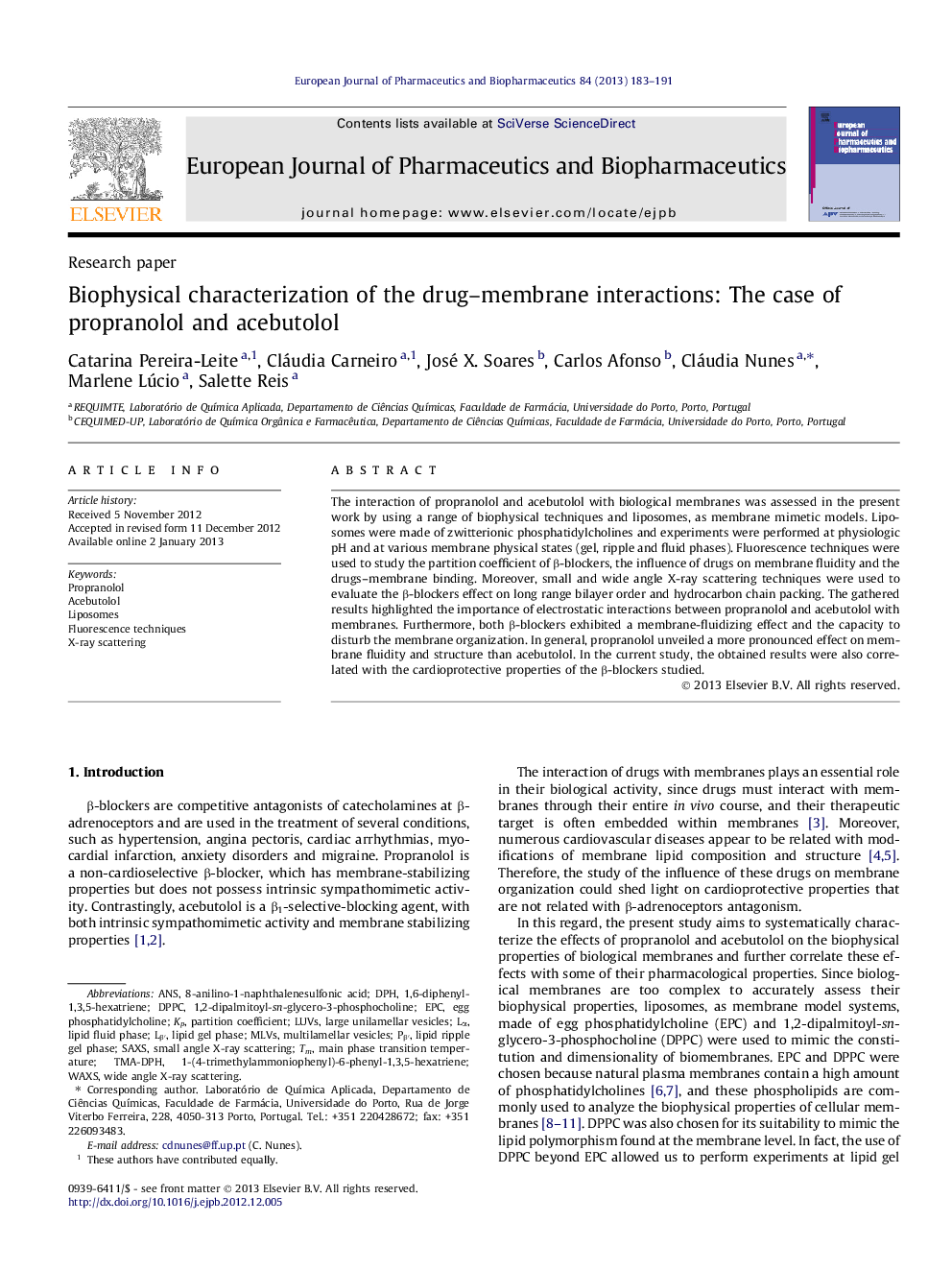| Article ID | Journal | Published Year | Pages | File Type |
|---|---|---|---|---|
| 2083925 | European Journal of Pharmaceutics and Biopharmaceutics | 2013 | 9 Pages |
The interaction of propranolol and acebutolol with biological membranes was assessed in the present work by using a range of biophysical techniques and liposomes, as membrane mimetic models. Liposomes were made of zwitterionic phosphatidylcholines and experiments were performed at physiologic pH and at various membrane physical states (gel, ripple and fluid phases). Fluorescence techniques were used to study the partition coefficient of β-blockers, the influence of drugs on membrane fluidity and the drugs–membrane binding. Moreover, small and wide angle X-ray scattering techniques were used to evaluate the β-blockers effect on long range bilayer order and hydrocarbon chain packing. The gathered results highlighted the importance of electrostatic interactions between propranolol and acebutolol with membranes. Furthermore, both β-blockers exhibited a membrane-fluidizing effect and the capacity to disturb the membrane organization. In general, propranolol unveiled a more pronounced effect on membrane fluidity and structure than acebutolol. In the current study, the obtained results were also correlated with the cardioprotective properties of the β-blockers studied.
Graphical abstractβ-Blockers exhibited a membrane-fluidizing effect and the capacity to disturb the membrane organization. In general, propranolol unveiled a more pronounced effect on membrane fluidity and structure than acebutolol.Figure optionsDownload full-size imageDownload high-quality image (225 K)Download as PowerPoint slide
